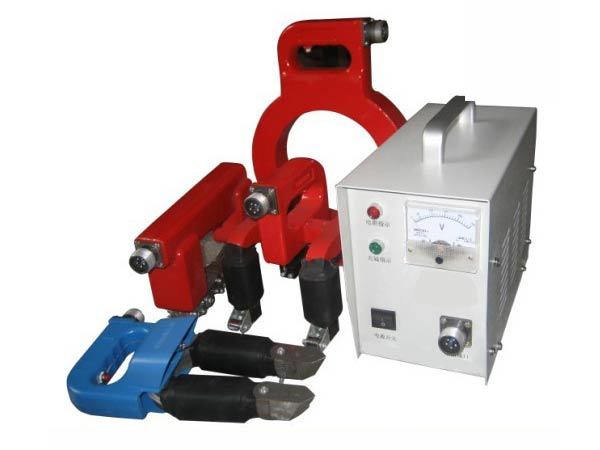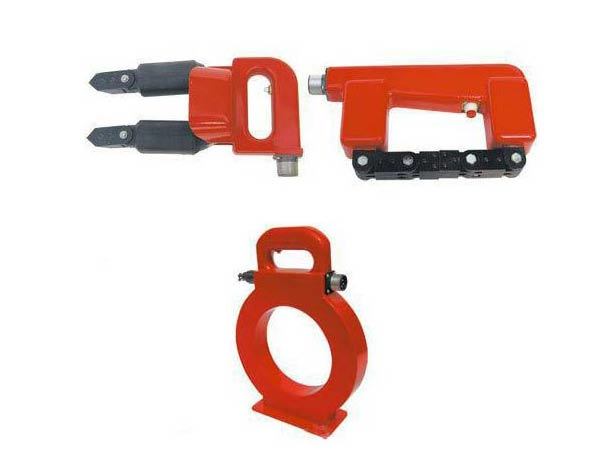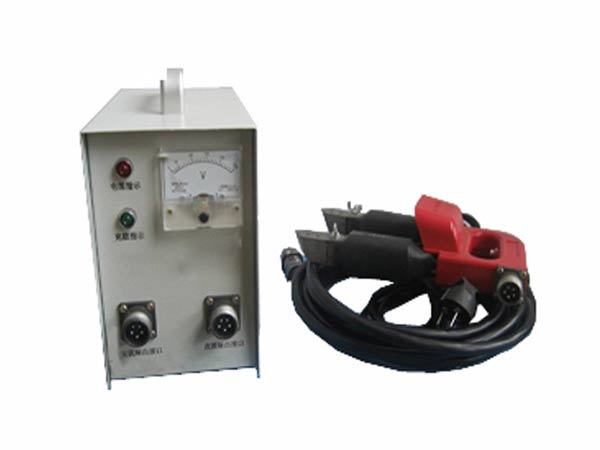Valves are found in virtually every industrial process, including water and sewage processing, mining, power generation, processing of oil, gas and petroleum, food manufacturing, chemical and plastic manufacturing and many other fields. Valves Stop Valves, Ball Cock, Angle Valves, Gate Valves, Check Valves ZHEJIANG KINGSIR VALVE CO., LTD. , http://www.cn-kingsir.com
MPT-1 multipurpose magnetic detector, plus all the benefits of having a portable model, which also boasts some of the strengths of the mobile models, the bottom of the instrument panel is equipped with two outlets respectively supplied with the probe type A and type D, and AC and DC need the probe coil ring type O.
II. Selection of functions:
(1) D type probe:(electromagnetic yoke probe)
Is equipped with the relevant section and can test the flat piece and surface with alternating and direct current.
(2) A type probe: (horseshoe probe) It can be a variety of fillet welds, large parts of the inner and outer angle of the AC and DC local testing.
(3) O type probe:(ring coil) The intensity of the internal magnetic field to 180 Oe probe type O applicable crack detection of all workpieces that can be positioned coils are used to detect stress cracking of the workpiece (fatigue cracks are perpendicular to the axial direction) is very convenient, can also be used to demagnetization with the method of distance workpiece, tools and measuring tools that are accidentally magnetized from the factory can be destructive demagnetization.
The machine adopts SCR firing circuits, electronic components through rigorous analysis, aging treatment machines, and so the performance is stable and reliable, with low failure rate. The output voltage of the instrument is safe, it is the occasion is more appropriate not allowed to enter the high-voltage equipment to test.
III. Main technical parameters
1) D probe
Polar distance: 50-200mm (adjustable);
Hoisting capacity: AC≥5kg, DC≥18kg(without joint);
Working current: ≥8A
Working voltage: AC=38V, DC=10V
Weight: 2.5kg.
2) A probe:
Pole distance: 20-160mm;
hoisting capacity: AC≥4.5kg and DC≥18kg;
power supply: AC=38V, DC=10V
Weight: 2.0kg.
3) O probe
Center magnetic field: 180Oe
Working voltage: AC=38VÂ DC=10V
Internal diameter: 150mm
Weight: 2.8kg
4) Specification of main frame
power supply: 220V±10% 50Hz 5A
Dimension: 262×130×228mm
Weight: 6.0kg
IV. Â Operation and Maintenance
Please read the Operating Instructions carefully before operation to master the structure and technical performance of the instrument and check if the power supply is applicable for the instrument and the connection is proper. Switch on the power only after everything is checked proper. Check if the instrument is in a sound condition when the instrument is used for the first time or has been out of operation for long.
Operating steps:
(1). Connect the plug to the power supply socket and then connect the detecting head to the output socket.
(2). Switch on the power to turn on the indicator light, connect the instrument control circuit and enable the servo.(3).Keep a good contact between the detecting head and the work piece and turn on the switch on the detecting head. Then the instrument will be magnetizing the work piece and the working lamp will be on. Then release the switch to cut off the power supply and stop the magnetization;
(4).Please switch off the mains switch after use.
Troubleshooting:
(1) The indicator light remains off and the tester does not work after the mains switch is turned on. The fuselage is broken due to short circuit or overload.
(2) The indicator light remains off after the switch is turned on and the detecting head is working. The indicator light fails.
(3) The indicator light is on but the detecting head does not magnetize. There is something wrong with the main circuit or control circuit.
(4) Switch on the power and magnetization is enabled even without turning on the magnetization switch. There is something wrong with the control circuit or bidirectional controlled silicon.
Â
V Note:
                      Time intermittent ≥ 5s.


People in developed nations use valves in their daily lives, including plumbing valves, such as taps for tap water, gas control valves on cookers, small valves fitted to washing machines and dishwashers, safety devices fitted to hot water systems, and poppet valves in car engines.
In nature there are valves, for example one-way valves in veins controlling the blood circulation, and heart valves controlling the flow of blood in the chambers of the heart and maintaining the correct pumping action.
Valves may be operated manually, either by a handle, lever, pedal or wheel. Valves may also be automatic, driven by changes in pressure, temperature, or flow. These changes may act upon a diaphragm or a piston which in turn activates the valve, examples of this type of valve found commonly are safety valves fitted to hot water systems or boilers.
More complex control systems using valves requiring automatic control based on an external input (i.e., regulating flow through a pipe to a changing set point) require an actuator. An actuator will stroke the valve depending on its input and set-up, allowing the valve to be positioned accurately, and allowing control over a variety of requirements.
Model NO.: MPT-1
HS Code: 903180
MPT-1 Multi-functional Magnetic Particle Detector
 I.  Brief Description